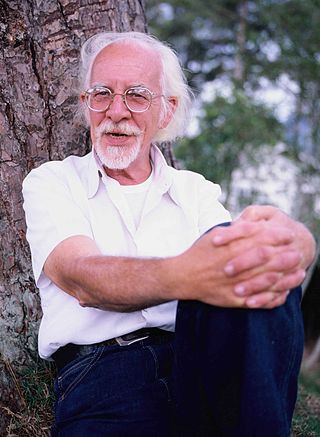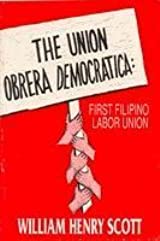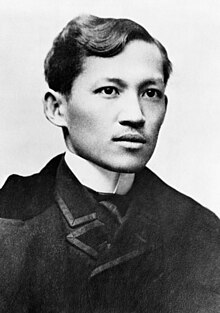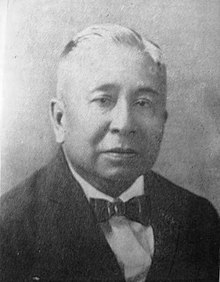
The Katipunan, officially known as the Kataastaasang Kagalanggalangang Katipunan ng mga Anak ng Bayan and abbreviated as the KKK, was a revolutionary organization founded in 1892 by a group of Filipino nationalists Deodato Arellano, Andrés Bonifacio, Valentin Diaz, Ladislao Diwa, José Dizon, and Teodoro Plata. Its primary objective was achieving independence from the Spanish Empire through an armed revolution. It was formed as a secret society before its eventual discovery by Spanish authorities in August 1896. This discovery led to the start of the Philippine Revolution.

Manila, officially the City of Manila, is the capital and second-most populous city of the Philippines, after Quezon City. Located on the eastern shore of Manila Bay on the island of Luzon, it is classified as a highly urbanized city. Manila is the world's most densely populated city proper, with 71,263 inhabitants per square kilometer (184,570/sq mi) and a population of 1,846,513 people in 2020; it is also the historic core of a built-up area that extends well beyond its administrative limits. Manila was the first chartered city in the country, designated by Philippine Commission Act No. 183 on July 31, 1901. It became autonomous with the passage of Republic Act No. 409, "The Revised Charter of the City of Manila", on June 18, 1949. Manila is considered to be part of the world's original set of global cities because its commercial networks were the first to extend across the Pacific Ocean and connect Asia with the Spanish Americas through the galleon trade. This marked the first time an uninterrupted chain of trade routes circling the planet had been established.

Gregorio Aglipay Cruz y Labayán was a Filipino former Roman Catholic priest and revolutionary during the Philippine Revolution and Philippine–American War who became the first head of the Iglesia Filipina Independiente (IFI), the first-ever wholly Filipino-led independent Christian Church in the Philippines in the form of a nationalist church.
Liberalism in the Philippines emerged during the Philippine Revolution, when Filipino revolutionary José Rizal hinted at liberalism in his works. The ideology emerged more during the creation of the Liberal Party of the Philippines, one of the oldest parties in the Philippines. The ideology slowly died out during the 2000s, with the rule of Rodrigo Duterte and other outside ideologies, including authoritarianism and populism. The ideology currently sits in a low position, submerged by other popular ideologies.

The Philippine Revolution was a war of independence waged by the revolutionary organization Katipunan against the Spanish Empire from 1896 to 1898. It was the culmination of the 333-year colonial rule of Spain in the archipelago. The Philippines was one of the last major colonies of the Spanish Empire, which had already suffered a massive decline in the 1820s. Cuba rebelled in 1895, and in 1898 the United States intervened and the Spanish soon capitulated. In June, Philippine revolutionaries declared independence. However, it was not recognized by Spain, which sold the islands to the United States in the Treaty of Paris.

Isabelo de los Reyes Sr. y Florentino, also known as Don Belong, was a prominent Filipino patriot, politician, writer, journalist, and labor activist in the 19th and 20th centuries. He was the original founder and proclaimer of the Iglesia Filipina Independiente, the first-ever Filipino independent Christian Church in history in the form of a nationalist church, which was proclaimed in 1902. He is popularly known today as the "Father of Philippine Folklore", the "Father of the Philippine Labor Movement", and the "Father of Filipino Socialism".

Filipino nationalism refers to the establishment and support of a political identity associated with the modern nation-state of the Philippines, leading to a wide-ranging campaign for political, social, and economic freedom in the Philippines. This gradually emerged from various political and armed movements throughout most of the Spanish East Indies—but which has long been fragmented and inconsistent with contemporary definitions of such nationalism—as a consequence of more than three centuries of Spanish rule. These movements are characterized by the upsurge of anti-colonialist sentiments and ideals which peaked in the late 19th century led mostly by the ilustrado or landed, educated elites, whether peninsulares, insulares, or native (Indio). This served as the backbone of the first nationalist revolution in Asia, the Philippine Revolution of 1896. The modern concept would later be fully actualized upon the inception of a Philippine state with its contemporary borders after being granted independence by the United States by the 1946 Treaty of Manila.

Epifanio de los Santos y Cristóbal, also known as Don Pañong or Don Panyong, was a notable Filipino historian, journalist, and civil servant. He was regarded as one of the best Filipino writers and a literary genius. He also entered politics, serving as a member of the Malolos Congress from 1898 to 1899 from Nueva Ecija and later as governor of Nueva Ecija from 1902 to 1906. As a lawyer, he was named as the district attorney of San Isidro, Nueva Ecija in 1900 and later as fiscal of the provinces of Bulacan and Bataan. He was named as an assistant technical director of the Philippine Census in 1918. He was appointed Director of the Philippine Library and Museum by Governor General Leonard Wood in 1925, serving until his death in 1928.

The Partido Komunista ng Pilipinas-1930 (PKP-1930), also known as the Philippine Communist Party, is a communist party in the Philippines that was established on November 7, 1930. It uses the aforementioned appellation in order to distinguish itself from its better known splinter group, the Communist Party of the Philippines.

William Henry Scott was a historian of the Cordillera Central and pre-Hispanic Philippines.

The Philippine Propaganda Movement encompassed the activities of a group based in Spain but coming from the Philippines, composed of Indios, Mestizos, Insulares and Peninsulares who called for political reforms in the Philippines in the late 19th century, and produced books, leaflets, and newspaper articles to educate others about their goals and issues they were trying to solve. They were active approximately from 1880 to 1898, and especially between 1880 and 1895, before the Philippine Revolutionary War against Spain began.

The history of the Philippines from 1565 to 1898 is known as the Spanish colonial period, during which the Philippine Islands were ruled as the Captaincy General of the Philippines within the Spanish East Indies, initially under the Viceroyalty of New Spain, based in Mexico City, until the independence of the Mexican Empire from Spain in 1821. This resulted in direct Spanish control during a period of governmental instability there.

During the Spanish colonial period in the Philippines (1521–1898), the different cultures of the archipelago experienced a gradual unification from a variety of native Asian and Islamic customs and traditions, including animist religious practices, to what is known today as Filipino culture, a unique hybrid of Southeast Asian and Western culture, namely Spanish, including the Spanish language and the Catholic faith.

The Unión Obrera Democrática Filipina was a trade union center in the Philippines. The organization was considered as the first-ever modern trade union federation in the history of the country, composed of unions from various labor industries; earlier and prior labor groups had been more of mutual aid societies and guilds. The organization had thirty-three affiliated trade unions as of 1902. In 1903, the organization counted 150 affiliated unions, with around 20,000 members in the Manila area. At its peak, the Union Obrera Democratica had approximately 150,000 members in eight provinces of Luzon. Its members were also the very first members of the Philippine Independent Church when it was proclaimed in 1902.
The Lapiang Malaya was a fanatical political party in the Philippines during the 1950s to the 1960s. Led by Valentin de los Santos, he functioned as a cult leader.
Communism in the Philippines emerged in the first half of the 20th century during the American colonial era of the Philippines. Communist movements originated in labor unions and peasant groups. The communist movement has had multiple periods of popularity and relevance to the national affairs of the country, most notably during the Second World War and the Martial Law Era of the Philippines. Currently, the communist movement is weaker, and considered an insurgent movement by the Armed Forces of the Philippines.
Student activism in the Philippines from 1965 to 1972 played a key role in the events which led to Ferdinand Marcos' declaration of Martial Law in 1972, and the Marcos regime's eventual downfall during the events of the People Power Revolution of 1986.

The historiography of the Philippines includes historical and archival research and writing on the history of the Philippine archipelago including the islands of Luzon, Visayas, and Mindanao.
Ramon Guillermo is a Filipino novelist, translator, poet, activist, and academic in the field of Southeast Asian Studies.
The Samahang Demokratiko ng Kabataan, better known simply by its acronym, SDK, was a mass organization of student and youth activists who pushed for the ideology of National Democracy in the Philippines during the Marcos dictatorship. Initially established on January 30, 1968 by activists who broke away from the Kabataang Makabayan (KM), it eventually reconciled with KM under the multi-sectoral Movement for a Democratic Philippines (MDP) in the common effort to fight the dictatorship of Ferdinand Marcos. Declared illegal along with any other political organizations when Marcos declared Martial Law in September 1972, it was eventually dissolved in 1975 as the socialist-led resistance to Marcos' martial law administration shifted its tactics away from mass youth organizations.















